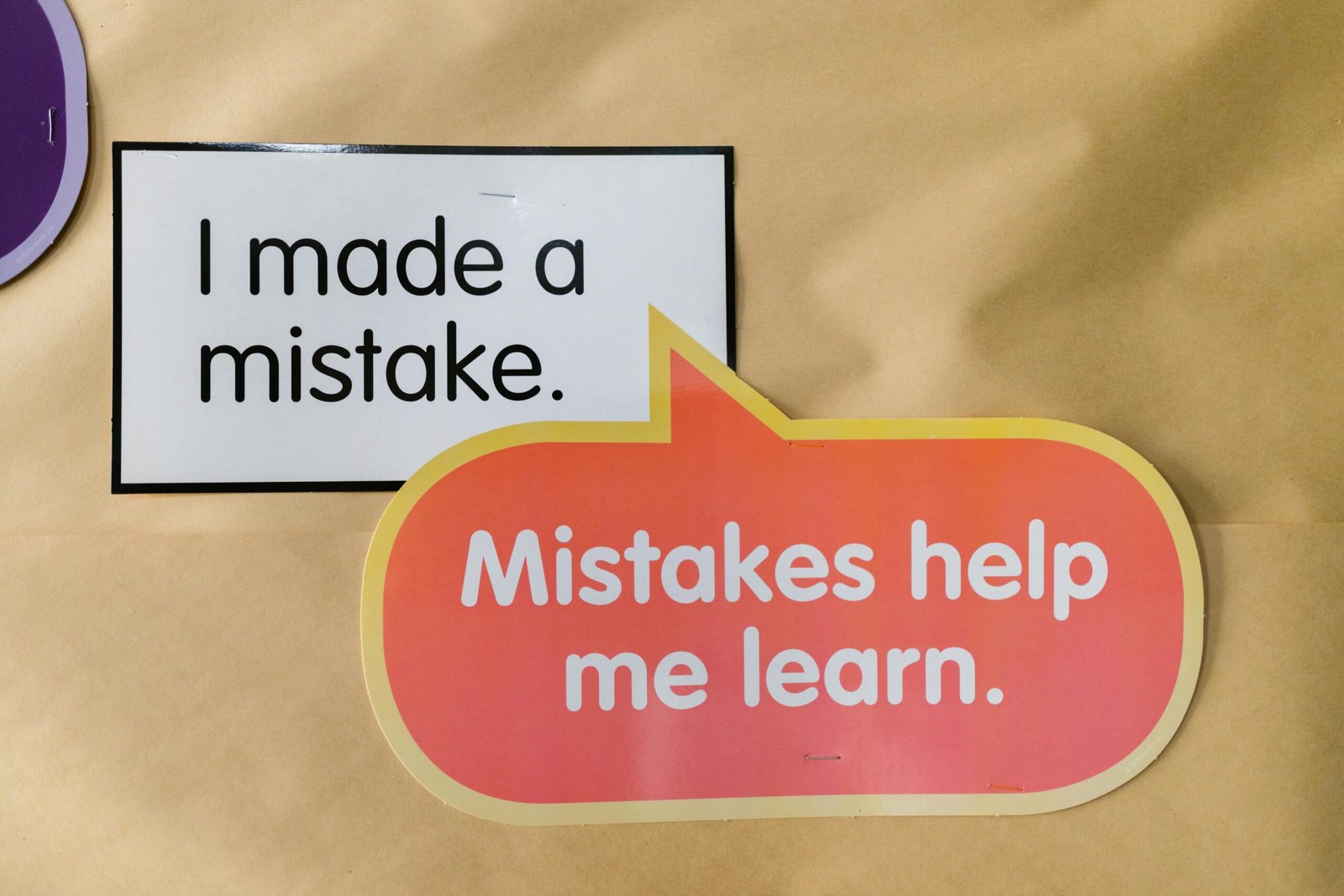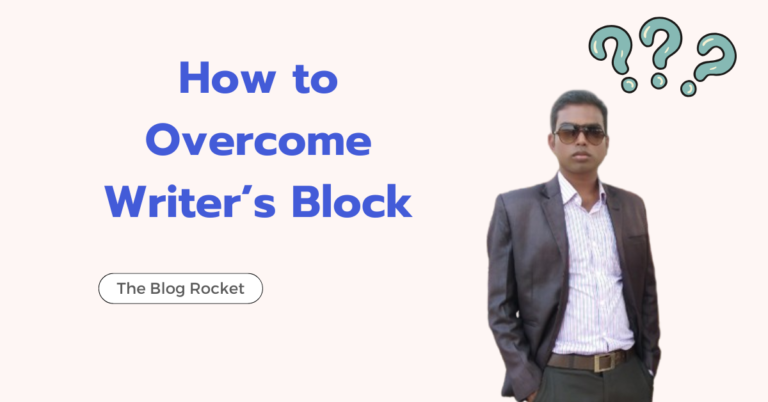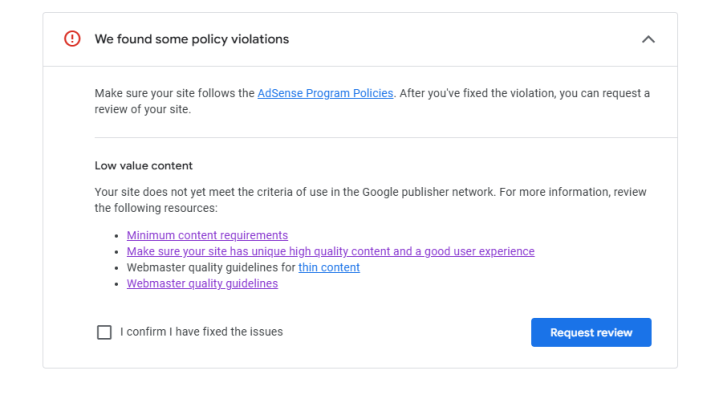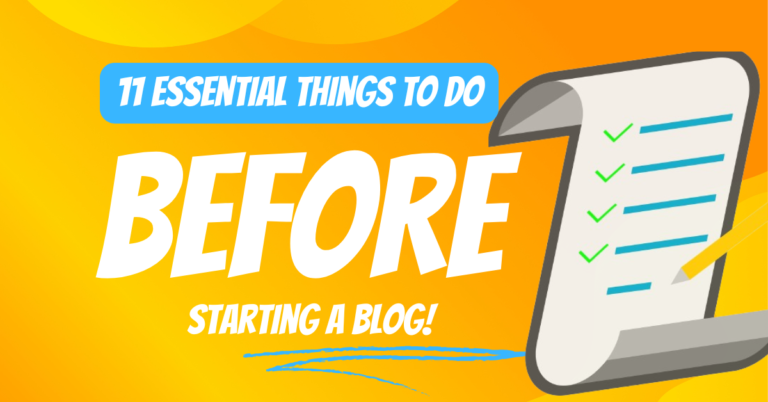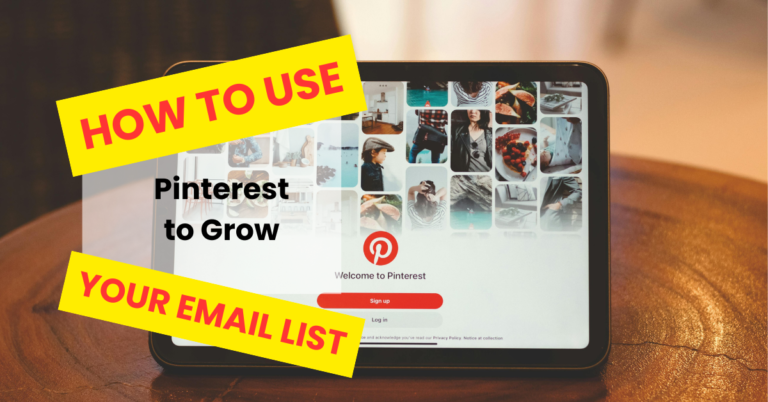When I first decided to start a blog, I was filled with excitement and big dreams. I imagined thousands of readers eagerly awaiting my posts, and my inbox flooded with collaboration offers.
But reality quickly set in, and I learned that the path to successful blogging is paved with much trial and error.
Trust me, I’ve made plenty of mistakes along the way. That’s why I want to share some common blogging mistakes to avoid so you can skip the frustration and get on the fast track to success.
One of my earliest blunders was choosing the wrong niche. I thought I’d hit gold with a tech review blog, but my heart just wasn’t in it. Writing felt like a chore, and my posts needed the passion that drew readers in. It wasn’t until I switched to a travel blog, something I genuinely loved and knew well, that my content started to resonate. Lesson learned: pick a niche you’re passionate about, not just one you think will be popular.
Another rookie mistake was ignoring SEO. I assumed good content would automatically find an audience—big mistake! I needed to understand basic SEO principles like keyword research and meta descriptions to ensure my posts were found in the vast sea of the internet. Once I started applying SEO best practices, my blog traffic significantly improved.
Consistency was another hurdle. Initially, I’d post five times in one week and then go silent for a month. This erratic schedule confused my readers and hurt my blog’s growth. Establishing a consistent posting schedule was a game-changer. It helped me build a loyal audience who knew when to expect new content.
I also underestimated the power of visual elements. My early posts were walls of text with few images, which weren’t engaging. My engagement rates soared once I incorporated more visuals like photos, infographics, and videos.
These are just a few of the pitfalls I encountered. By learning from my mistakes, you can avoid these common blogging errors and set yourself up for a more prosperous and enjoyable blogging journey. Let’s dive into the details so you can start your blog on the right foot!
In this article, I’ll walk you through 21 common blogging mistakes, focusing on what many beginners make, and I’ll show you how to fix them.
Whether you’re new to blogging or just looking to sharpen your skills, this guide will help you avoid the pitfalls that can slow you down.
Contents
- 1 Why Do These Blogging Mistakes Happen?
- 2 5 Reasons Why You Need To Recognize And Fix Your Blogging Mistakes
- 3 21 Common Blogging Mistakes And How To Fix Them
- 3.1 1. Choosing the Wrong Niche
- 3.2 2. Neglecting Target Audience
- 3.3 3. Inconsistent Posting Schedule
- 3.4 4. Ignoring SEO Best Practices
- 3.5 5. Poor Content Quality
- 3.6 6. Overlooking Visual Elements
- 3.7 7. Not Promoting Your Blog
- 3.8 8. Ignoring Analytics
- 3.9 9. Not Linking to Other Blog Posts (Internal and External)
- 3.10 10. Skipping Keyword Research
- 3.11 11. Failing to Update Old Content
- 3.12 12. Not Networking with Other Bloggers
- 3.13 13. Choosing a Poor Domain Name
- 3.14 14. Overloading with Ads
- 3.15 15. Neglecting Mobile Optimization
- 3.16 16. Not Building an Email List
- 3.17 17. Not Engaging with Readers
- 3.18 18. Not Monetizing Early Enough
- 3.19 19. Not Investing in Blogging Tools
- 3.20 20. Not Having a Long-Term Strategy
- 3.21 21. Giving Up Too Soon
- 4 Final Thoughts
Why Do These Blogging Mistakes Happen?
Lack of Experience
When you’re just starting, everything about blogging can seem overwhelming. There’s much to learn—SEO, content creation, marketing, etc. It’s easy to make mistakes simply because you don’t know any better. Lack of experience is the number one reason beginners make these errors, but with the proper guidance, you can quickly get on the right track.
Overwhelm and Information Overload
We live in an age of information overload. A simple Google search on “how to start a blog” can yield millions of results. This can overwhelm, making it difficult to know which advice to follow and which to ignore. Often, beginners try to do everything at once, leading to mistakes.
Misunderstanding of Audience Needs
One of the most common blog mistakes is not understanding what your audience wants. Many beginners write about what they think is interesting without considering whether their audience will find it valuable. This disconnect can lead to low engagement and traffic.
Neglecting Long-Term Strategy
When you’re just starting, focusing on the short term is easy. You want results now, which can lead to amateur blogger mistakes like chasing trends or writing clickbait instead of focusing on a long-term strategy that will bring sustainable success.
Overemphasis on Aesthetics Over Content
Yes, your blog should look good, but focusing too much on the design while neglecting content quality is a mistake. Remember, your readers come for the content, not just the visuals. Balancing aesthetics with valuable, well-written content is key.

5 Reasons Why You Need To Recognize And Fix Your Blogging Mistakes
Improve User Experience
Recognizing and fixing your mistakes is crucial for improving user experience. When your blog is easy to navigate, and your content is relevant and valuable, visitors are likelier to stay longer, engage with your posts, and return in the future.
Boost SEO Performance
Search engine optimization (SEO) is critical for getting your blog noticed. Common mistakes like not optimizing your posts for keywords or neglecting meta descriptions can hurt your rankings. Fixing these errors can lead to better visibility on search engines, which means more traffic.
Increase Engagement
If your blog isn’t engaging, readers won’t stick around. Recognizing mistakes like poor content quality or lack of interaction can help create a more engaging blog that encourages comments, shares, and return visits.
Build Credibility and Authority
A blog riddled with mistakes can make you look unprofessional. Fixing these issues helps build your credibility and authority in your niche. Readers are likelier to trust and follow bloggers presenting well-organized, well-researched content.
Monetization Potential
Finally, fixing blogging mistakes can increase monetization potential. Whether using affiliate marketing, sponsored posts, or selling your products, a polished, error-free blog is more likely to attract advertisers and partners.
21 Common Blogging Mistakes And How To Fix Them
1. Choosing the Wrong Niche
When I first started blogging, I chose a niche I thought was famous rather than something I was passionate about. Big mistake! Blogging about a topic you love makes a huge difference. Your passion and knowledge will shine through your writing, keeping you motivated and consistent. Without passion, your content might feel forced, and readers can tell.
What to do instead:
Before you settle on a niche, do some market research. Find out what people are searching for and what questions they have. Tools like Google Trends and Keyword Planner are invaluable for this. Look for a sweet spot where your interests overlap with what people want to read about. Balancing your passion with market demand can significantly increase your chances of success.
Example: Instead of choosing “health” as your niche, you could narrow it down to “plant-based nutrition for busy professionals” to attract a more targeted audience.
2. Neglecting Target Audience
Refrain from neglecting your target audience by creating content that doesn’t resonate with the people you want to reach. This can lead to low engagement and high bounce rates.
What to do instead:
- Create reader personas: Develop detailed profiles of your ideal readers, including their demographics, interests, and pain points.
- Tailor your content: Write posts addressing your target audience’s needs and challenges.
Example: If your target audience is new mothers, focus on content like “Time-Saving Tips for New Moms” or “Healthy Meal Ideas for Busy Moms.”
3. Inconsistent Posting Schedule
Establishing a Schedule
Consistency is crucial for blogging success. When I began, I posted sporadically, and my readership suffered. Set a realistic posting schedule and stick to it. Whether once a week or twice a month, let your readers know when to expect new content. This builds trust and keeps your audience coming back.
Staying Committed
Life gets busy, and sometimes, blogging can take a back seat. To stay consistent, plan your content. Use tools like Trello or Asana to organize your ideas and schedule posts. Batch writing and scheduling posts in advance can save you during busy times. Trust me, staying committed to your schedule pays off in the long run.
Example: If you post every Tuesday, ensure you have content ready for that day. This builds trust with your readers.
4. Ignoring SEO Best Practices
SEO (Search Engine Optimization) is vital for increasing your blog’s visibility on search engines. Neglecting it can prevent your content from reaching its entire potential audience.
What to do instead:
- Perform keyword research: Identify keywords your target audience is searching for and incorporate them naturally into your content.
- Optimize meta tags and descriptions: Ensure every post has a unique meta title, meta description, and alt tags for images, which will help search engines understand and rank your content.
Example: If you write a post about “Effective Time Management,” research relevant keywords like “time management tips” or “how to manage time effectively” and use them strategically in your title, headings, and throughout the post.
5. Poor Content Quality
Content is King
Quality content is the backbone of a successful blog. Early on, I focused more on quantity than quality, which was a big mistake. Ensure your posts are well-researched, informative, and engaging. Avoid grammatical errors and poor structure.
Publishing poor-quality content can damage your blog’s reputation and drive readers away. Readers will only stick around if your content is well-researched, full of errors, and engaging. Readers appreciate well-written, valuable content and keep returning for more.
What to do instead:
Make your writing engaging. Use a conversational tone and include personal anecdotes to connect with your readers. When I share personal travel stories, my readers are more engaged. Don’t be afraid to let your personality shine through. Edit and proofread your posts to avoid errors and maintain a professional appearance.
Example: Instead of quickly writing a post titled “Weight Loss Tips,” research scientifically-backed strategies and offer actionable advice.
6. Overlooking Visual Elements
Overlooking visual elements can make your blog look dull and unappealing. Visuals make your content more attractive and help convey information more effectively.
What to do instead:
- Use high-quality images: Incorporate relevant images, infographics, or videos to break up text and keep readers engaged.
- Optimize images for SEO: Use descriptive filenames and alt text for your images to improve search engine visibility.
Example: If you’re writing a tutorial on “How to Start a Vegetable Garden,” include step-by-step photos or a video to clarify the instructions.
7. Not Promoting Your Blog
Not promoting your blog can result in low traffic, even if your content is high-quality. Simply publishing posts isn’t enough—you need to encourage them actively.
What to do instead:
- Leverage social media: Share your blog posts on platforms where your target audience is active, like Twitter, Facebook, Instagram, or Pinterest.
- Engage with online communities: Join forums, groups, and communities related to your niche, and share your content in a helpful and non-spammy way.
Example: If your blog is about personal finance, share your posts in relevant Reddit communities, Facebook groups, or LinkedIn posts to reach a broader audience.
8. Ignoring Analytics
Ignoring analytics means missing out on valuable insights into how your blog is performing and what your audience likes or dislikes.
What to do instead:
- Set up Google Analytics: Track key metrics like traffic, bounce rate, and user behavior to understand what’s working and where improvements are needed.
- Use data to inform decisions: Analyze your top-performing posts and replicate their success by focusing on similar topics or formats.
Example: If posts about “Budget Travel Tips” consistently perform well, consider creating more content in that area or developing a comprehensive guide or e-book.
9. Not Linking to Other Blog Posts (Internal and External)
Internal and external linking is crucial to your blog’s SEO and user experience. Internal links help search engines understand the hierarchy and structure of your content, improving crawlability and ranking. External links to authoritative sites add credibility to your content and provide additional value to your readers.
What to do instead:
- Establish a pillar content strategy: Create in-depth, comprehensive posts (pillar pages) that serve as central hubs for key topics in your niche—link related blog posts to these pillars to strengthen SEO.
- Link to relevant blogs: When referencing data, studies, or ideas from other sources, link to them. This adds credibility and depth to your content.
Example: If you’re writing about “SEO Best Practices,” you might create pillar content around topics like “Comprehensive SEO Audits,” “Essential SEO Tips for 2024,” and “Top SEO Tools You Need.” Link other relevant blog posts to these pillars.
10. Skipping Keyword Research
Skipping keyword research can result in content that needs to rank better in search engines, making it harder for new readers to find your blog.
What to do instead:
- Conduct keyword research: Use tools like Google Keyword Planner or Ahrefs to identify keywords your audience is searching for.
- Incorporate keywords naturally: Use your chosen keywords in your content’s title, headings, and body.
Example: If your blog is about DIY projects, research keywords like “easy DIY crafts” or “home improvement tips” and use them in your posts to improve SEO.
11. Failing to Update Old Content
Failing to update old content can result in outdated information that may no longer be relevant or accurate, hurting your blog’s credibility.
What to do instead:
- Regularly review and update content: Schedule time to revisit older posts and refresh them with updated information, new images, and current statistics.
- Repurpose old content: To reach a wider audience, turn well-performing posts into new formats, like infographics, videos, or e-books.
Example: If you wrote a post on “Top Marketing Trends for 2022,” update it with the latest trends for 2024 to keep it relevant and continue attracting traffic.
12. Not Networking with Other Bloggers
Not networking with other bloggers can limit your growth opportunities. Building relationships with other bloggers can lead to collaborations, guest posts, and increased exposure.
What to do instead:
- Engage with the blogging community: Comment on other blogs, join blogging groups, and attend online or in-person events related to your niche.
- Collaborate with others: Consider guest posting, co-hosting webinars, or partnering on joint projects with other bloggers.
Example: If your blog focuses on sustainable living, collaborate with other eco-friendly bloggers on a joint series or e-book, which can help expand both your audiences.
13. Choosing a Poor Domain Name
Choosing a good domain name can make it easier for readers to find and remember your blog. A superficial or irrelevant domain name can also help your branding.
What to do instead:
- Choose a simple, memorable domain name: Your domain should be easy to spell, relevant to your niche, and preferably short.
- Avoid numbers and hyphens: These can be confusing and make your domain harder to remember and share.
Example: Instead of using a domain like “1234-lifestyleblog.com,” choose something simple and relevant like “SimpleLifestyleTips.com.”
14. Overloading with Ads
Overloading your blog with ads can negatively impact user experience, making your site look cluttered and detracting from your content.
What to do instead:
- Limit the number of ads: Focus on quality over quantity. Place ads strategically where they won’t disrupt the reader’s experience.
- Use native advertising: Opt for ads that blend seamlessly with your content, providing value without being intrusive.
Example: Instead of filling every available space with banner ads, consider using a few well-placed affiliate links within your content that align with your blog’s theme.
15. Neglecting Mobile Optimization
Neglecting mobile optimization can result in a poor user experience for most readers accessing your blog on mobile devices.
What to do instead:
- Use a responsive design: Ensure your blog automatically adjusts to different screen sizes to offer a seamless experience across all devices.
- Test your blog on multiple devices: Regularly check how it looks and functions on smartphones and tablets to ensure it’s user-friendly.
Example: If you’re using WordPress, choose a responsive theme and test your site on both iOS and continuing from where we left off:
16. Not Building an Email List
Not building an email list is a missed opportunity to engage with your audience directly and drive repeat traffic to your blog. An email list lets you communicate with your readers even if social media algorithms change.
What to do instead:
- Create an incentive for sign-ups: Offer a freebie, such as an e-book, checklist, or exclusive content, to encourage visitors to join your email list.
- Use email marketing software: Tools like Mailchimp or ConvertKit make it easy to manage your email list and send regular updates.
Example: If your blog is about productivity, offer a free “Daily Planner Template” to incentivize readers to subscribe to your email list. Then, send out weekly emails with productivity tips and links to your latest blog posts.
17. Not Engaging with Readers
Not engaging with readers can make your blog feel impersonal and discourage readers from returning. Building a community around your blog is essential for long-term success.
What to do instead:
- Respond to comments: Respond to comments on your blog and social media channels. This shows that you value your readers’ input.
- Encourage discussion: Ask questions in your posts and encourage readers to share their thoughts and experiences in the comments.
Example: If you write a post about “Budgeting Tips,” end it with a question like, “What’s your best budgeting tip?” and encourage readers to share their answers in the comments.
18. Not Monetizing Early Enough
Not monetizing your blog early enough can mean missing out on potential revenue streams. While focusing on building quality content first is essential, you should immediately start monetizing.
What to do instead:
- Introduce monetization gradually: Start with affiliate marketing or offering a tiny product like an e-book. As your audience grows, you can explore additional revenue streams like sponsored posts or ads.
- Focus on value: Ensure monetization efforts add value to your readers and don’t compromise their experience on your blog.
Example: If you have a blog about fitness, you could start with affiliate links to your favorite workout gear and gradually introduce your fitness programs or coaching services.
19. Not Investing in Blogging Tools
Not investing in blogging tools can limit your growth and efficiency. There are many tools available that can help you improve your blog’s design, SEO, and content creation process.
What to do instead:
- Invest in essential tools: Start with the basics, such as a good hosting service, a premium theme, and an SEO plugin. As your blog grows, consider investing in more advanced tools like keyword research software or email marketing services.
- Leverage free trials: Many tools offer free trials, so take advantage of these to see if they fit your blog well before committing.
Example: If you’re serious about growing your blog, investing in a premium SEO tool like Ahrefs or SEMrush can provide valuable insights into keyword opportunities and competitors’ strategies.
20. Not Having a Long-Term Strategy
Having a long-term strategy can lead to burnout and consistency. To be successful over time, blogging requires a plan and clear goals.
What to do instead:
- Set clear goals: Define what you want to achieve with your blog, whether it’s traffic milestones, monetization, or community-building.
- Create a content strategy: Plan your content around your goals and audience’s needs, and review your strategy regularly to ensure you’re on track.
Example: If your goal is to build a following around personal finance, plan a series of posts on “How to Save Money,” “Investing for Beginners,” and “Debt Reduction Strategies,” and track your progress toward your goals.
21. Giving Up Too Soon
Many new bloggers make the mistake of giving up too soon. Building a successful blog takes time, effort, and persistence.
What to do instead:
- Be patient: Understand that blogging is a long-term commitment, and it may take months or even years to see significant results.
- Celebrate small wins: Recognize and celebrate your progress, whether it’s your first comment, first subscriber, or 100-page views.
Example: If you’re feeling discouraged because your traffic is growing slower than you’d like, remember that consistency and persistence are key. Keep creating valuable content and promoting your blog; the results will come.
Final Thoughts
Blogging is a journey, and making mistakes along the way is natural. The key is to recognize these blogging mistakes early and take steps to correct them.
By focusing on quality content, understanding your audience, and continually optimizing your blog, you’ll set yourself up for long-term success.
Whether you’re a beginner or looking to refine your approach, avoiding these common mistakes will help you grow your blog into a successful platform.
By following the advice in this guide, you’ll avoid the pitfalls many beginners face and build a strong foundation for your blogging journey.
Remember, the key is to stay passionate and consistent and keep your audience in mind.
Happy blogging!
Additional Resources
To further help you on your blogging journey, here are some recommended tools and resources:
- Google Analytics: This tracks and analyzes your blog’s performance.
- Canva: For creating stunning visuals and graphics.
- Mailchimp: This is for building and managing your email list.
- Google Keyword Planner: This is for researching keywords and optimizing your content.
- Grammarly: This is for proofreading and improving your writing.
By leveraging these resources and implementing the tips in this article, you’ll be well on your way to building a successful blog.
Remember, blogging is a marathon, not a sprint. Stay dedicated, keep learning, and most importantly, enjoy the process!
How long does it take to make money blogging in 2024?
How to start a profitable blog in 2024
Hosted vs. self-hosted – which is best for your blog?
What is a blog, and how does it work?

